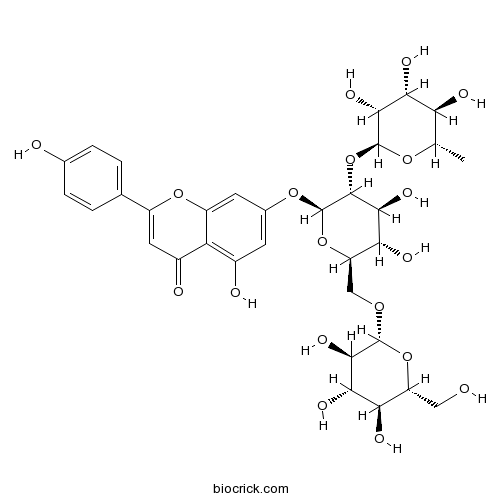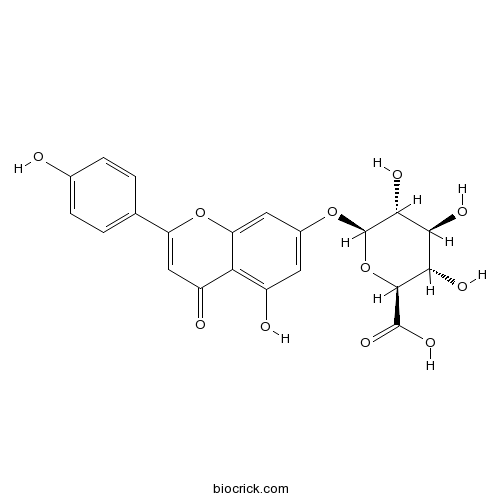Lactuca sibirica
Lactuca sibirica
1. The products in our compound library are selected from thousands of unique natural products; 2. It has the characteristics of diverse structure, diverse sources and wide coverage of activities; 3. Provide information on the activity of products from major journals, patents and research reports around the world, providing theoretical direction and research basis for further research and screening; 4. Free combination according to the type, source, target and disease of natural product; 5. The compound powder is placed in a covered tube and then discharged into a 10 x 10 cryostat; 6. Transport in ice pack or dry ice pack. Please store it at -20 °C as soon as possible after receiving the product, and use it as soon as possible after opening.
Natural products/compounds from Lactuca sibirica
- Cat.No. Product Name CAS Number COA
-
BCN1524
Apigenin 7-O-(2G-rhamnosyl)gentiobioside174284-20-9
Instructions

-
BCN5326
Apigenin-7-glucuronide29741-09-1
Instructions

Lignans and sesquiterpenoids from Lactuca sibirica.[Pubmed: 18325684]
From aerial parts of Lactuca sibirica, two new and one known furofuran lignans were isolated, together with four known lactucin-like guaianolides. On the basis of spectral data, the new lignans were characterized as acylated glucopyranosides of 4alpha, 8alpha-dihydroxypinoresinol.
The effect and transmission of one isolate of the rust Puccinia minussensis on five clones of Lactuca sibirica.[Pubmed: 28313637]
In a greenhouse experiment, one isolate of the systemic rust fungus Puccinia minussensis was applied to the host clone from which it was collected and to four other clones of the host Lactuca sibirica. The plants were grown in fertilized potting compost (N+) to promote growth and in peat (N-) to hamper growth, for three growing periods during one year. The results show that the expression of host plant resistance could not be determined visually, but there were differences in effects on the clones. The rust isolate was found to produce a significantly higher percentage of diseased shoots on clone A (the clone it was taken from). Furthermore, the rust also had the strongest effect on both biomass and shoot production on clone A compared to the other four clones. The data suggest that the rust isolate is highly adapted to the clone from which it originated. We suggest that selection in this system has not favoured a benign pathogen and that similar patterns are likely to occur for plants that (i) rarely establish by seeds; (ii) have strong lateral growth; and (iii) may persist for long periods once established.


